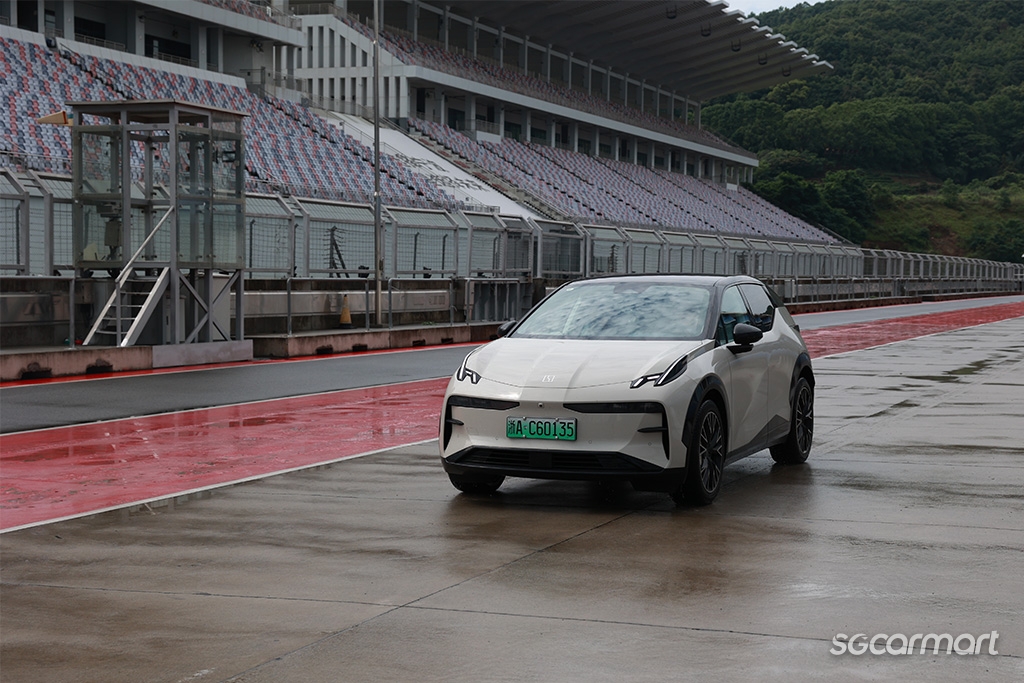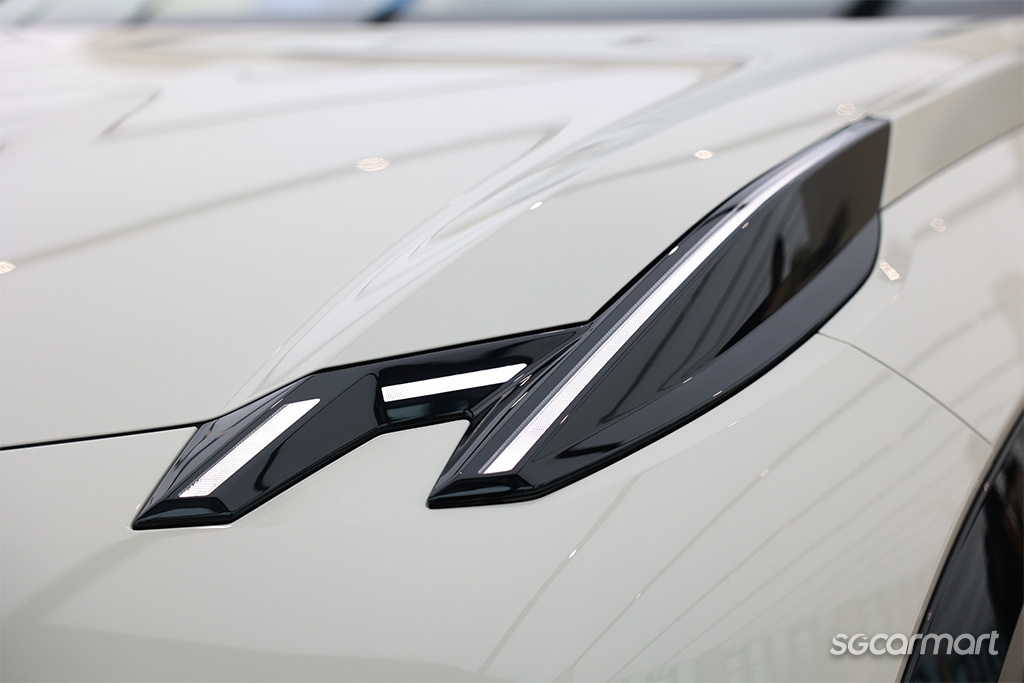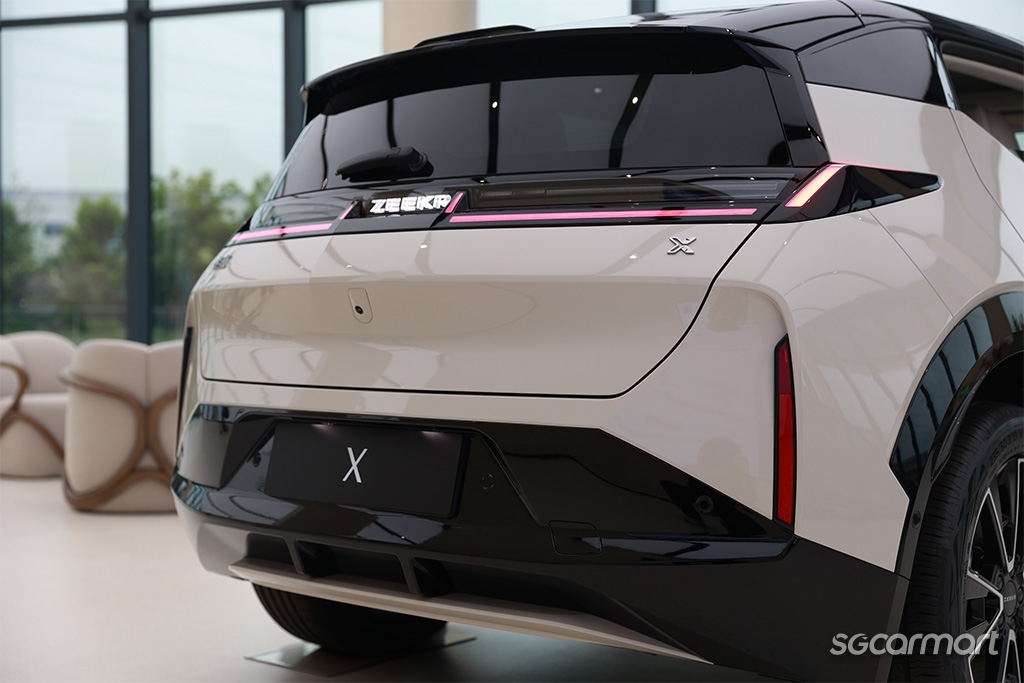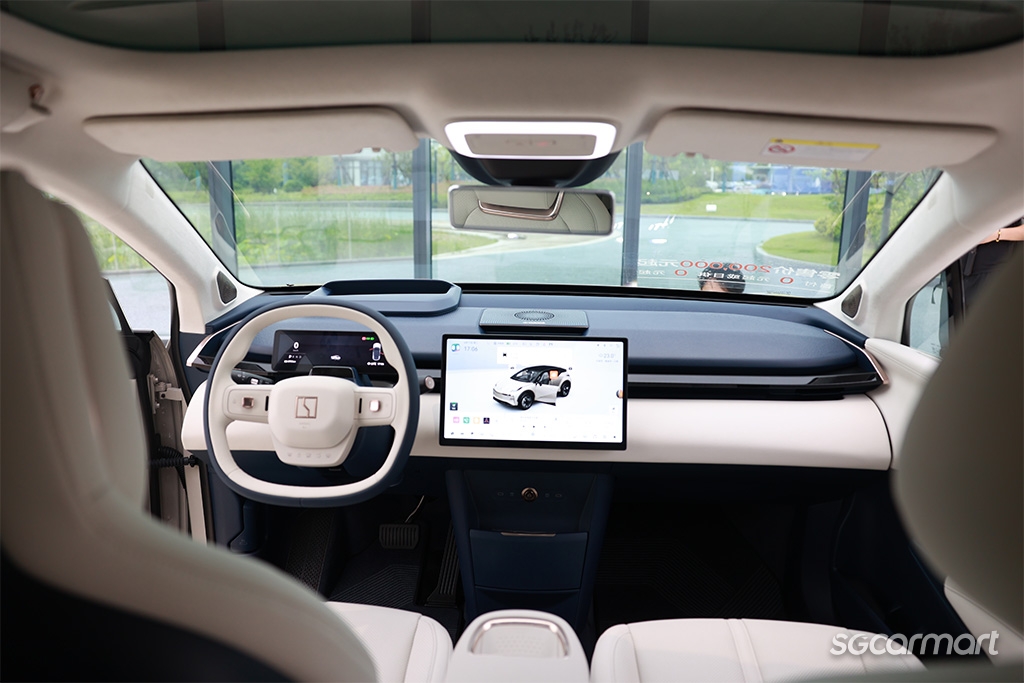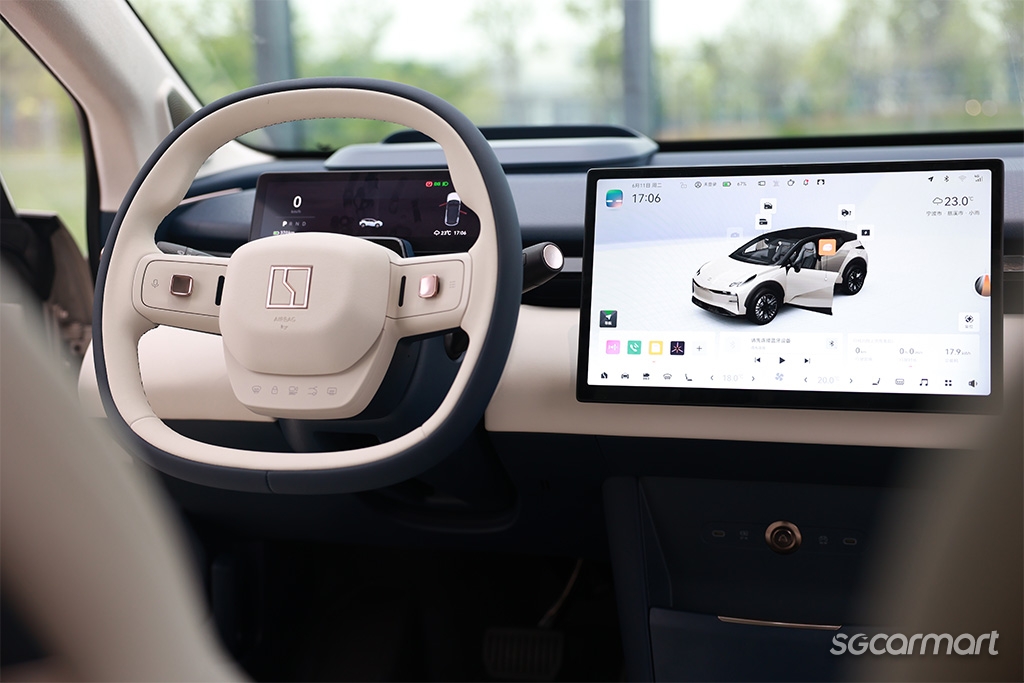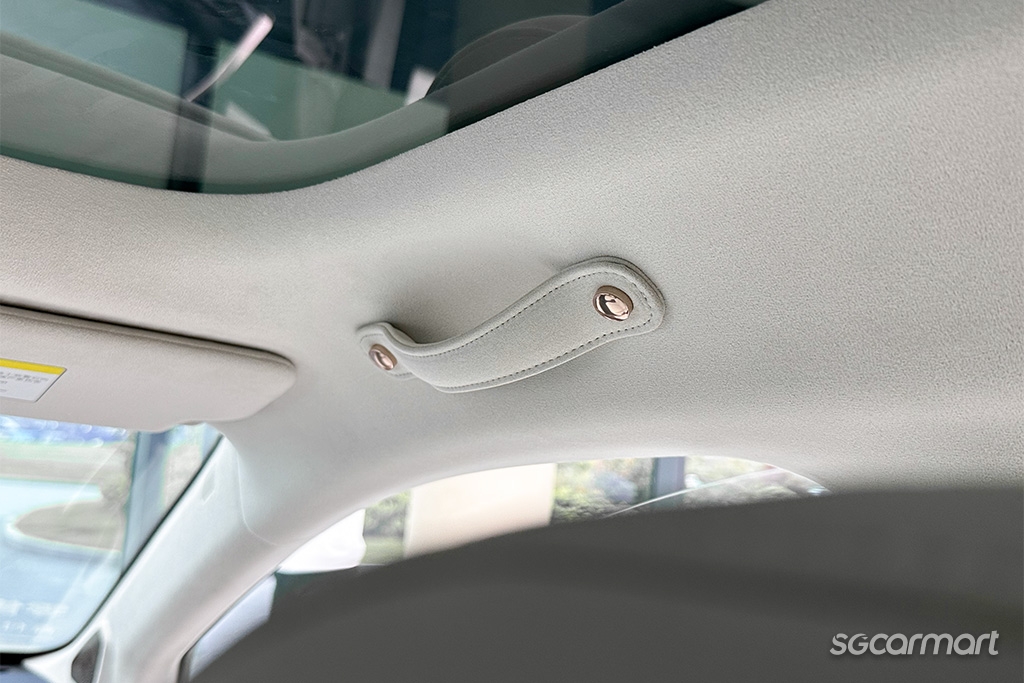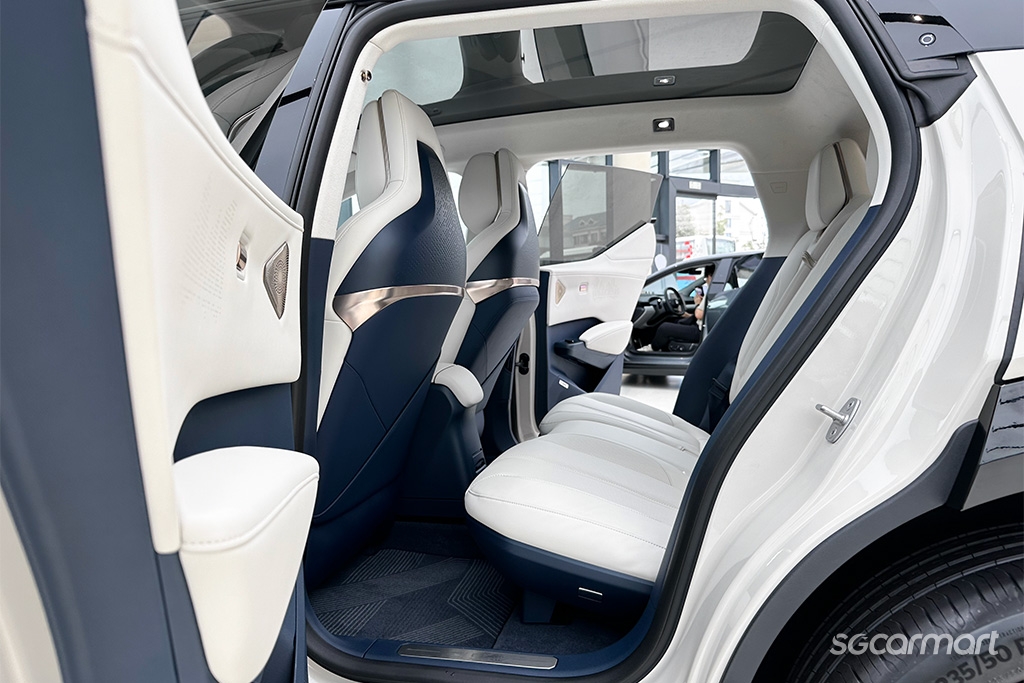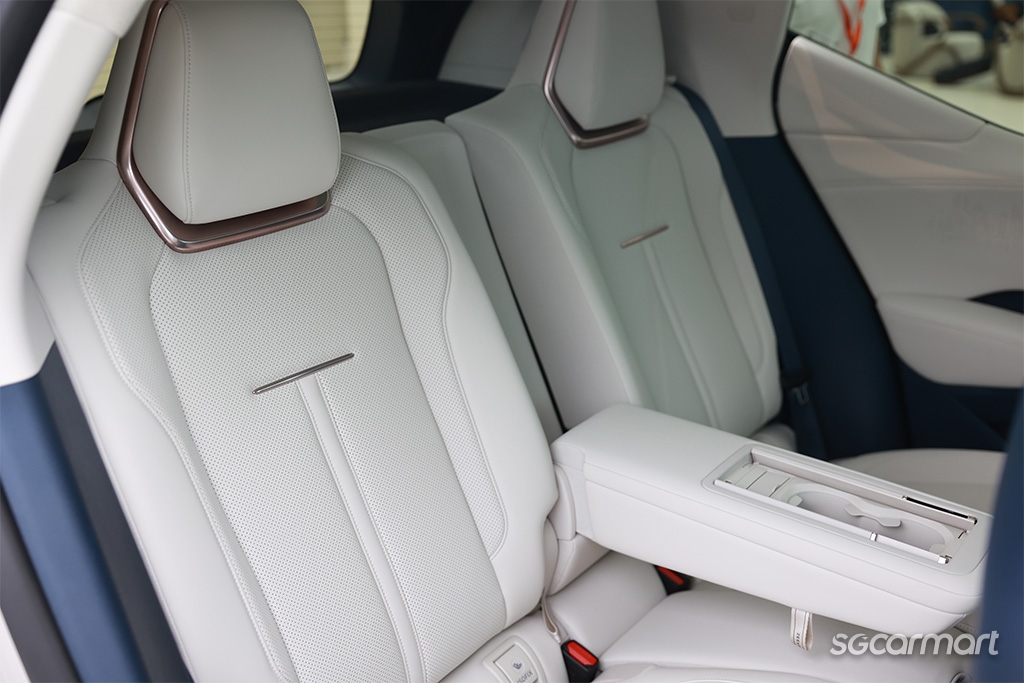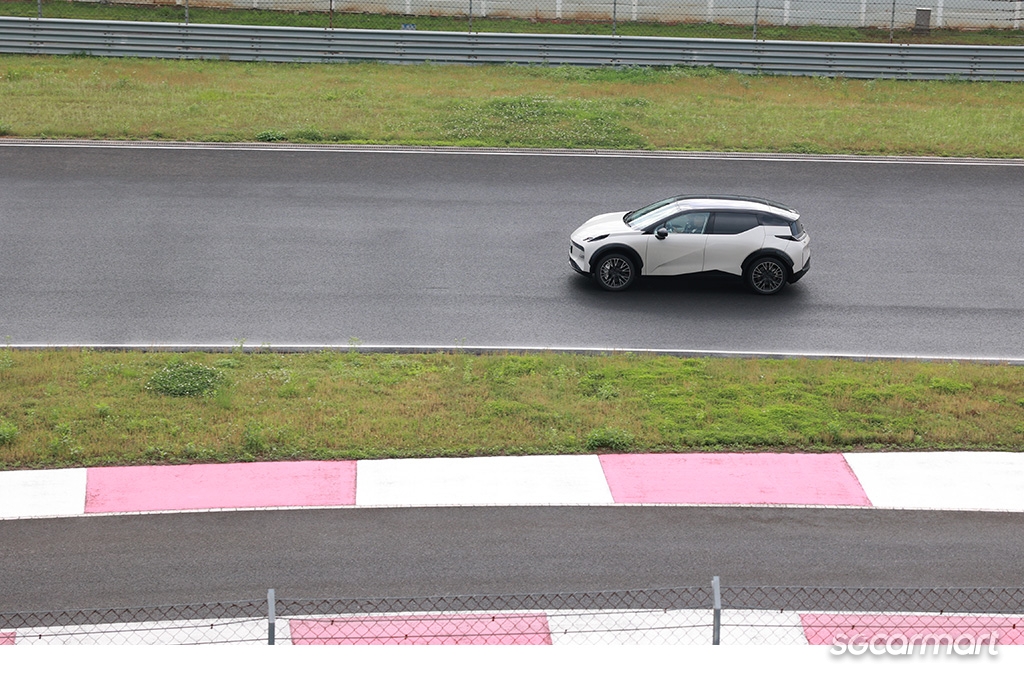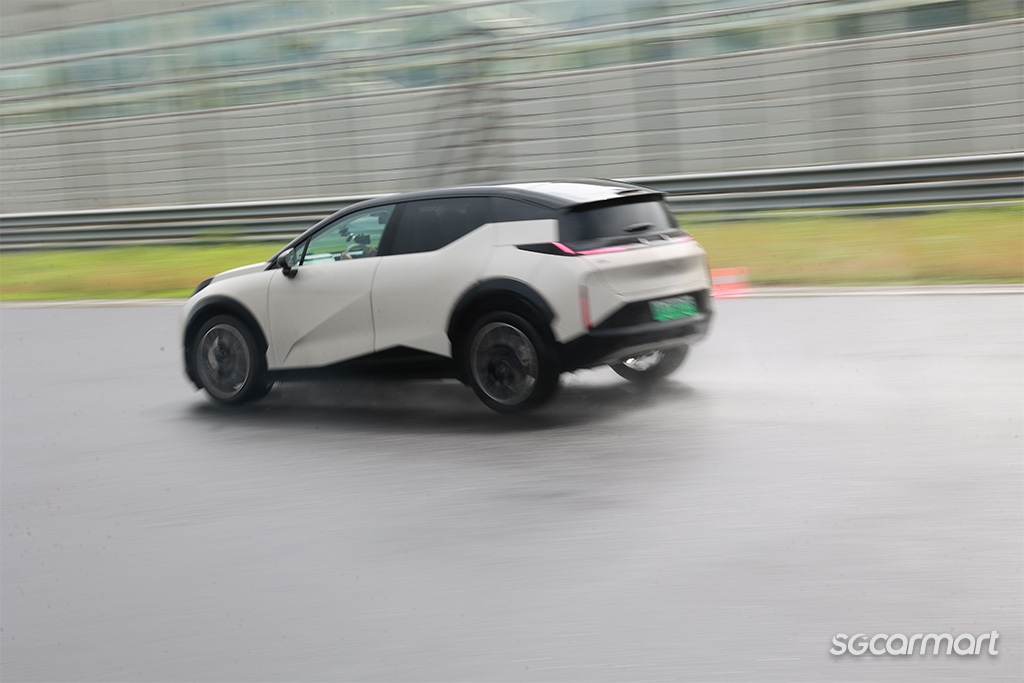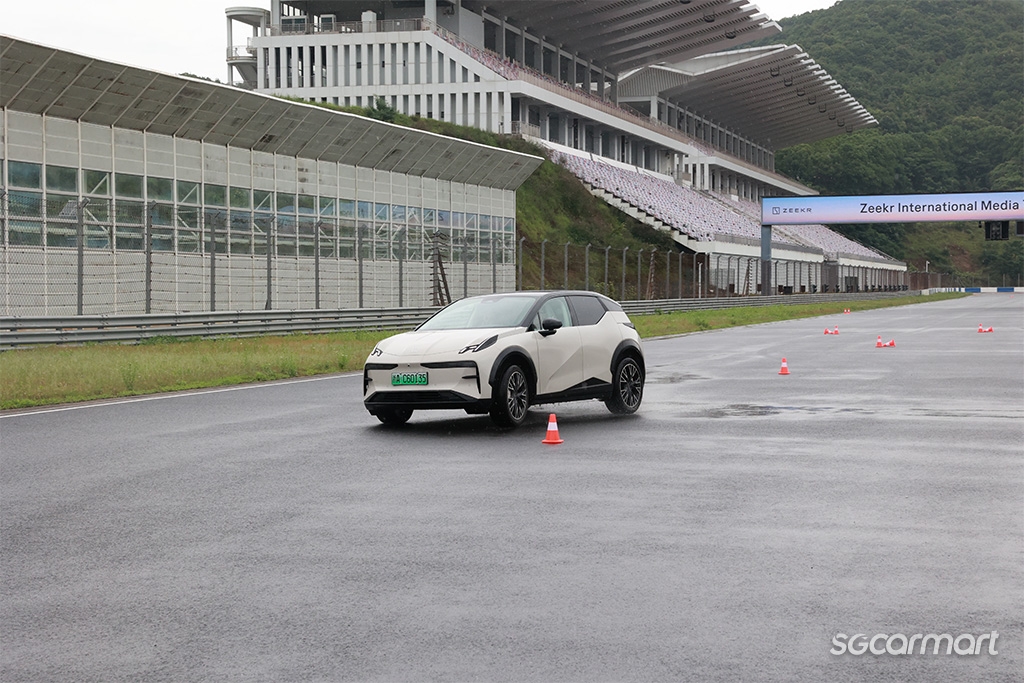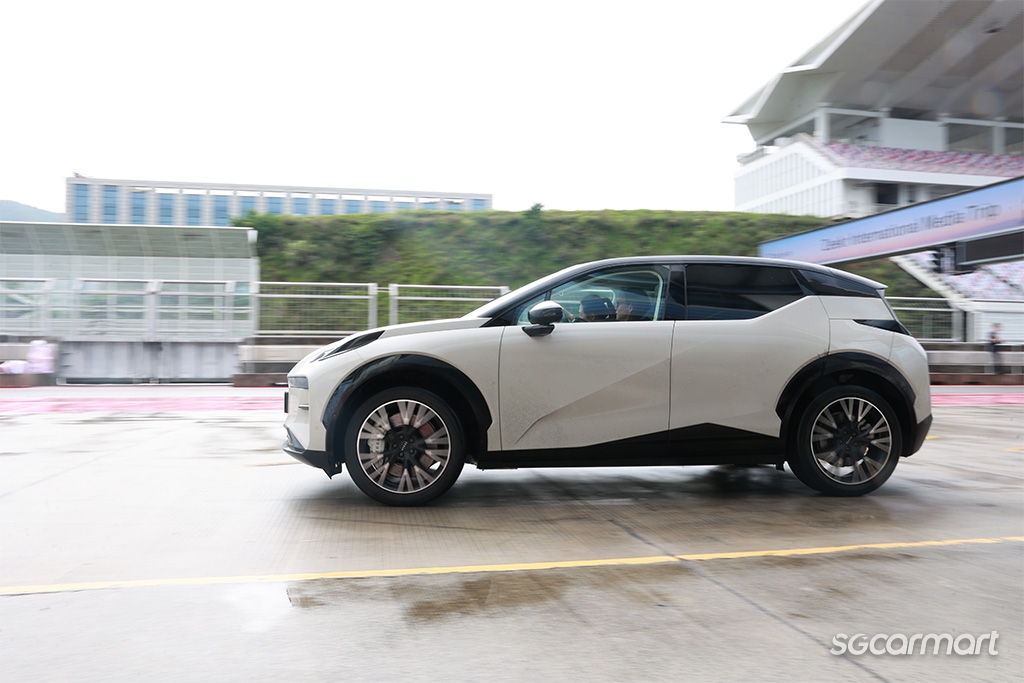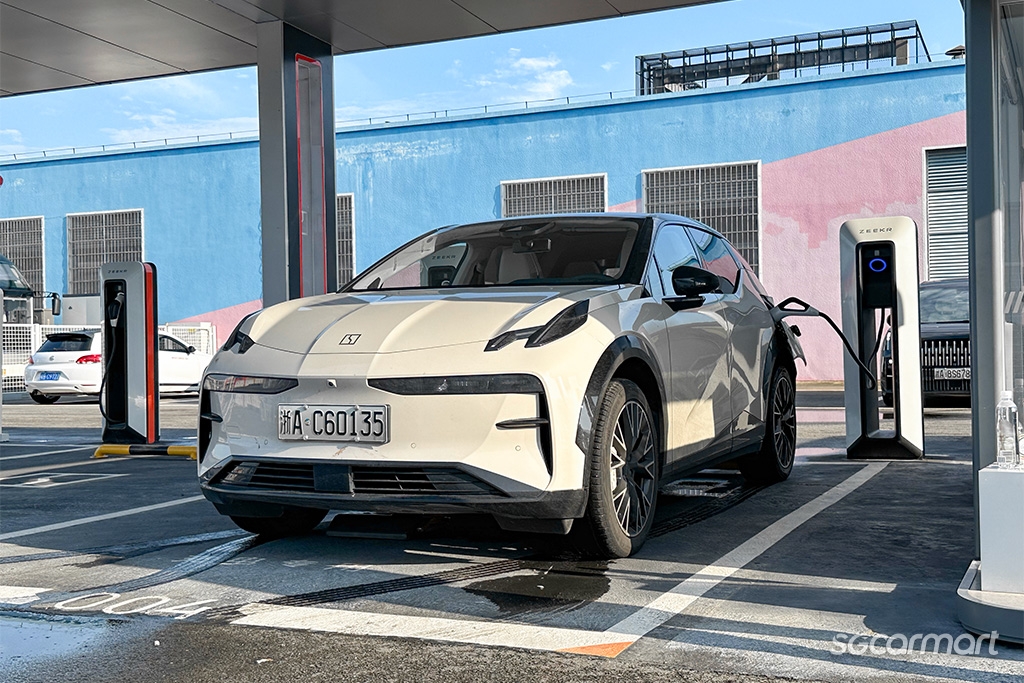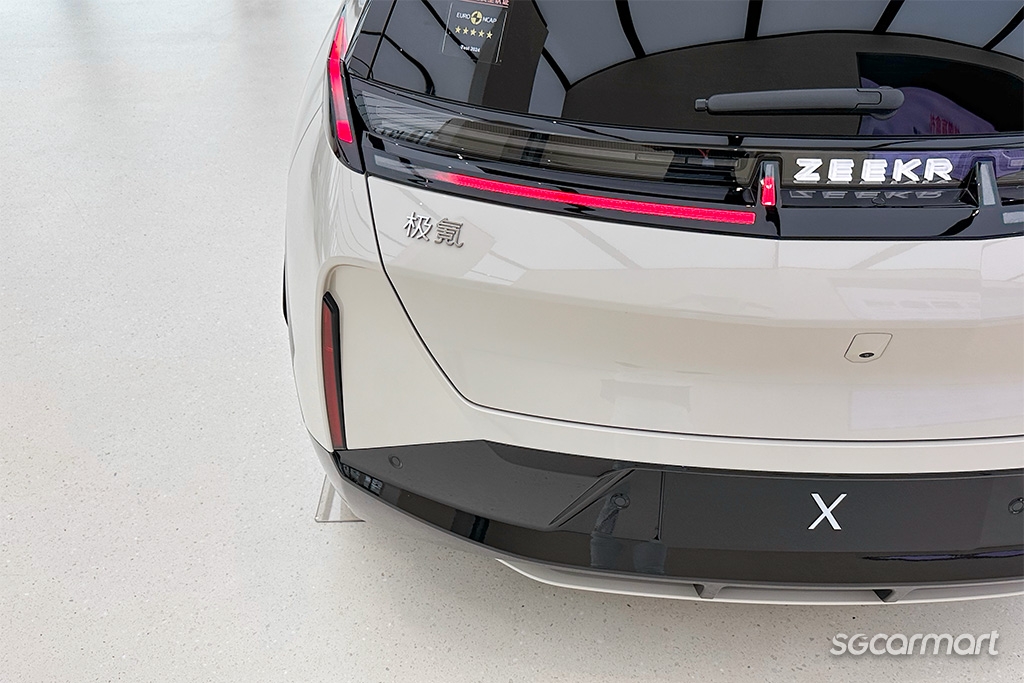Zeekr X AWD 66kWh First Drive Review
17 Jun 2024|37,855 views
What We Like
Love-it-or-hate-it styling
Sumptuous cabin design
Generous leg and headroom for rear passengers considering the car's size
Ludicrous power!
Balanced drive
What We Dislike
Love-it-or-hate-it styling
Hard-to-miss weight
Full power of dual-motor variant unlikely to be tapped in Singapore
Chinese electric vehicle (EV) brands appear to be sprouting up by the dozens in recent times, but few seem as clear about the fact that they want to be the last word - or should we say, last alphabet - in premium EVs as Zeekr.
Fret not if the name sounds unfamiliar, since the company has technically only been around since 2021. Still, its powerful parent, Geely, might sound familiar; the brand was present itself in Singapore for a few years in the early 2000s. Today, we know Geely Group better as the steward of the Volvo and Polestar brands, as well as for providing the engineering know-how behind the recent Smart #1.
This added context, however, may just amplify the most important question on everyone’s minds. In a sea of electric crossovers - a few of them mechanically similar - where exactly is Zeekr turning towards to ensure that its first compact electric crossover, the Zeekr X, has - ahem - sufficient X-factor?
Not retrofuturistic - just futuristic
The first answer might just lie in the car's styling. 'Pretty' is subjective, but even so, we're pretty sure that this word wasn't on the mind of the design team when it designed the Zeekr X. If the Green Goblin were to one day leave his villainous days behind with the intention of setting up a small family, this might just be his vehicle of choice.
The X may be your typical compact crossover in terms of size (specifically, Zeekr calls this an 'urban SUV') - but is as unconventional looking as compact crossovers come today, with its moustached front, sharp lines and trapezoidal shapes.
Forget flushed door handles; the X keeps things even neater on its sides with electric release doors instead, which are activated by small circular buttons (the front ones swing out entirely on their own, while the rear ones pop open).
These protruding, three-dimensional DRLs - consisting of distinct black pieces with their own LED strips embedded - are a key part of the X's curious-looking face
The car's alien-likeness is further accentuated by a rather uncommon feature on modern cars: Three-dimensional daytime running lights, protruding out of its bonnet, made up of distinct black pieces with their own LED pieces embedded.
The rear, meanwhile, is a no less busy affair. If you're old enough, the second-gen Renault Megane Hatchback will likely come to mind - except imagine it on stilts, with a bit of weight put on, then rocketed 50 years into the future.
Retrofuturistic isn't the game plan here; just plain futuristic. And while the X won't be winning any beauty contests, it will most certainly appeal to drivers tired of the hyper-slippery bodies that have come to define the world of aerodynamic EVs today. On Singapore's roads, this is sure to turn heads.
Stepping in: The premium question
Likewise, the cabin of the Zeekr X clearly reaches for a hyper-modern look - but here, the results should be more universally appreciable.
In fact, the interior might just be the area in which it stands out most immediately.
Your standard dose of digitalisation comes courtesy of screens for the instrument cluster and infotainment (separate, by the way, instead of the single-panel setups that are now the rage), but otherwise, most of the elevated surfaces upfront feel that bit more squidgy and pleasant than one typically gets in this segment. While harder plastics can still be found down low, the tightly-executed two-tone finish still helps the entire space feel and look sumptuous.
The X gets your standard dose of digitalisation with its separate screens for the instrument cluster and infotainment - while still offering more uniquely-designed bits, such as this curved grab handle for the front passenger
More significant, are the less conventional details that you find in the X: The front passenger's grab handle - as if detached from an expensive leather suitcase - screams old money; the door release and window operation buttons are finished in a matte, metallic coat. Instead of hooks, you also get rounded knobs at the rear to hang items. Tying everything together is the use of a rose gold brushed trim, which reinforces the sense of polish.
Local Chinese units of the X even come with a detachable, modular central cubby - which can be flipped upwards perpendicularly, and specced to double-up as a fridge. It makes sense, though: If there was any way to push Zeekr's 'premium' claim, it would be on the inside.
We learned in a chat with Zeekr representatives that its dedicated UI/UX team put in quite a fair bit of effort to ensure that the navigation of the OS would not result in endless menu-diving and labyrinth-navigating - but the infotainment system does feel a bit unwieldy at first glance.
A generous 2,750mm wheelbase means that legroom in the rear is quite generous despite the X's compact dimensions
Although there wasn't sufficient time to fully dive into things, the user experience comes across as arguably typical Chinese EV-fare: Chock full of icons, features and applications.
We won't belabour the point; it's highly likely that the OS will get its own locally-filtered sheen when the X eventually arrives, but it does seem that some level of emphasis is being placed on the voice assistant function, which Zeekr says will help you get to where you want to in an instant anyway.
Otherwise, space is fairly good for a crossover measuring just slightly over 4.4m in length.
Interestingly, the Zeekr X is built atop of the same platform as the Smart #1 - the Sustainable Experience Architecture 2 (SEA 2) - and boasts the same wheelbase of 2,750mm, meaning most average-sized Singaporean adults shouldn't be wanting for legroom in the rear, though shoulder room might be a bit tight.
First driving impressions: Solid all-rounder
Being built atop of the SEA 2 doesn't just mean that the X shares some level of similarity with the Smart #1 in terms of size, but in power too.
Both of the powertrain variants offered internationally will eventually make their way to Singapore, consisting of a single-motor RWD one, capable of 200kW (268bhp) and 343Nm of torque, and its dual-motor all-wheel drive twin, capable of 315kW (422bhp) and 543Nm of torque.
Again, if you've seen those numbers before, it's because these are exactly the power figures you get on the Smart #1 Pro+ and spicier Brabus.
Interestingly, there is an important difference: Both variants of the Zeekr X are quicker from 0 to 100km/h than their distant mechanical twins. Specifically, the all-wheel drive variant we got to drive zips to 100km/h from rest in just 3.8s (one-tenth of a second quicker than the #1 Brabus).
For some context, the X is barking up (or rather, noiselessly creeping up on) the likes of the ludicrous Audi RS3 just based on pure figures.
And in a straight line, the car absolutely pulls. Floor the accelerator, and the X scampers away with hilarious urgency, evoking the exact sort of head-pinned-back, blood-rushing-to-the-head experience for all onboard you'd expect a car with its stature of power would.
This part of the story shouldn't be surprising, though: Such is the new order of the electric world. Instead, the X impresses with how controlled it feels when not going in a straight line.
While the steering feels a bit disconnected from what's happening on the tarmac, even in Sport, it's still responsive and quick enough to inspire confidence. And even though the car's weight is eminently perceptible through all manner of driving, it doesn't roll about haplessly, the way you might expect a raised two-tonne machine to do.
Although clearly (and correctly) skewed towards comfort, the X feels surprisingly engaging from behind the wheel too
Its brakes also offer sufficient bite considering its weight, and while keener drivers will find the car's eco-tyres to be a weak link under harder driving, the lowered centre of gravity from its batteries and all-wheel drive still help it feel planted, balanced and surprisingly grippy for a crossover - even on a wet track.
More relevant for non-track driving, the car's suspension feels soft and cushy - yet also damped well enough that it doesn't bob about after hitting imperfections on the road (in this case, taking some curb on the track). You get the sense that a fair bit of work has gone into refining the car's chassis.
Driven in a less hasty manner (not track days, but commutes out of the CBD on weekdays or around the island with the family on a weekend), the X should be quite a lovely cruiser.
Assessing the car's range based on our drive would be a bit pointless - the units we got up close with had to put up with being gunned around the track for the better part of three hours anyway, making it unfair (and inaccurate) to pass any real judgement.
Still, official figures put the X in acceptable territory for a modern electric compact crossover.
A 66kWh battery gives the dual-motor variant we drove 420km of official range, while the more efficient single-motor rear-wheel drive one can go a bit further (440km). Thanks to the car's 400V battery architecture, fast charging capabilities are pretty good too, supporting DC charging at up to 150kW.
An X with sufficient X-factor?
That Zeekr has chosen the X as one of only two models to field into right-hand drive markets (the full domestic lineup is currently five-car strong) makes sense: It's exactly the sort of body style that should appeal best to today's buyers. The flip side, however, is that it now also walks into a segment that is growing more saturated by the day.
A lot of the X's appeal, then, will come down to whether or not it delivers on the 'premium' promise that Zeekr is trading heavily on - especially as a Chinese carmaker (with a partially European-backed team), and especially as a completely new name seeking to make a striking first impression.
By this token, the first brief impressions are relatively rosy.
As an electric crossover, the X does everything you want of it - and then a bit more, especially with its interior craft and unorthodox styling. (Sgcarmart understands that the cars arriving in Singapore should be quite generously-specced, too.) Pricing will likely play a huge role, and with prices likely to start around $220,000 for the RWD variant inclusive of COE, the X might just mark the (right) spot between value and luxury-lite.
What We Like
Love-it-or-hate-it styling
Sumptuous cabin design
Generous leg and headroom for rear passengers considering the car's size
Ludicrous power!
Balanced drive
What We Dislike
Love-it-or-hate-it styling
Hard-to-miss weight
Full power of dual-motor variant unlikely to be tapped in Singapore
Chinese electric vehicle (EV) brands appear to be sprouting up by the dozens in recent times, but few seem as clear about the fact that they want to be the last word - or should we say, last alphabet - in premium EVs as Zeekr.
Fret not if the name sounds unfamiliar, since the company has technically only been around since 2021. Still, its powerful parent, Geely, might sound familiar; the brand was present itself in Singapore for a few years in the early 2000s. Today, we know Geely Group better as the steward of the Volvo and Polestar brands, as well as for providing the engineering know-how behind the recent Smart #1.
This added context, however, may just amplify the most important question on everyone’s minds. In a sea of electric crossovers - a few of them mechanically similar - where exactly is Zeekr turning towards to ensure that its first compact electric crossover, the Zeekr X, has - ahem - sufficient X-factor?
Not retrofuturistic - just futuristic
The first answer might just lie in the car's styling. 'Pretty' is subjective, but even so, we're pretty sure that this word wasn't on the mind of the design team when it designed the Zeekr X. If the Green Goblin were to one day leave his villainous days behind with the intention of setting up a small family, this might just be his vehicle of choice.
The X may be your typical compact crossover in terms of size (specifically, Zeekr calls this an 'urban SUV') - but is as unconventional looking as compact crossovers come today, with its moustached front, sharp lines and trapezoidal shapes.
Forget flushed door handles; the X keeps things even neater on its sides with electric release doors instead, which are activated by small circular buttons (the front ones swing out entirely on their own, while the rear ones pop open).
These protruding, three-dimensional DRLs - consisting of distinct black pieces with their own LED strips embedded - are a key part of the X's curious-looking face
The car's alien-likeness is further accentuated by a rather uncommon feature on modern cars: Three-dimensional daytime running lights, protruding out of its bonnet, made up of distinct black pieces with their own LED pieces embedded.
The rear, meanwhile, is a no less busy affair. If you're old enough, the second-gen Renault Megane Hatchback will likely come to mind - except imagine it on stilts, with a bit of weight put on, then rocketed 50 years into the future.
Retrofuturistic isn't the game plan here; just plain futuristic. And while the X won't be winning any beauty contests, it will most certainly appeal to drivers tired of the hyper-slippery bodies that have come to define the world of aerodynamic EVs today. On Singapore's roads, this is sure to turn heads.
Stepping in: The premium question
Likewise, the cabin of the Zeekr X clearly reaches for a hyper-modern look - but here, the results should be more universally appreciable.
In fact, the interior might just be the area in which it stands out most immediately.
Your standard dose of digitalisation comes courtesy of screens for the instrument cluster and infotainment (separate, by the way, instead of the single-panel setups that are now the rage), but otherwise, most of the elevated surfaces upfront feel that bit more squidgy and pleasant than one typically gets in this segment. While harder plastics can still be found down low, the tightly-executed two-tone finish still helps the entire space feel and look sumptuous.
The X gets your standard dose of digitalisation with its separate screens for the instrument cluster and infotainment - while still offering more uniquely-designed bits, such as this curved grab handle for the front passenger
More significant, are the less conventional details that you find in the X: The front passenger's grab handle - as if detached from an expensive leather suitcase - screams old money; the door release and window operation buttons are finished in a matte, metallic coat. Instead of hooks, you also get rounded knobs at the rear to hang items. Tying everything together is the use of a rose gold brushed trim, which reinforces the sense of polish.
Local Chinese units of the X even come with a detachable, modular central cubby - which can be flipped upwards perpendicularly, and specced to double-up as a fridge. It makes sense, though: If there was any way to push Zeekr's 'premium' claim, it would be on the inside.
We learned in a chat with Zeekr representatives that its dedicated UI/UX team put in quite a fair bit of effort to ensure that the navigation of the OS would not result in endless menu-diving and labyrinth-navigating - but the infotainment system does feel a bit unwieldy at first glance.
A generous 2,750mm wheelbase means that legroom in the rear is quite generous despite the X's compact dimensions
Although there wasn't sufficient time to fully dive into things, the user experience comes across as arguably typical Chinese EV-fare: Chock full of icons, features and applications.
We won't belabour the point; it's highly likely that the OS will get its own locally-filtered sheen when the X eventually arrives, but it does seem that some level of emphasis is being placed on the voice assistant function, which Zeekr says will help you get to where you want to in an instant anyway.
Otherwise, space is fairly good for a crossover measuring just slightly over 4.4m in length.
Interestingly, the Zeekr X is built atop of the same platform as the Smart #1 - the Sustainable Experience Architecture 2 (SEA 2) - and boasts the same wheelbase of 2,750mm, meaning most average-sized Singaporean adults shouldn't be wanting for legroom in the rear, though shoulder room might be a bit tight.
First driving impressions: Solid all-rounder
Being built atop of the SEA 2 doesn't just mean that the X shares some level of similarity with the Smart #1 in terms of size, but in power too.
Both of the powertrain variants offered internationally will eventually make their way to Singapore, consisting of a single-motor RWD one, capable of 200kW (268bhp) and 343Nm of torque, and its dual-motor all-wheel drive twin, capable of 315kW (422bhp) and 543Nm of torque.
Again, if you've seen those numbers before, it's because these are exactly the power figures you get on the Smart #1 Pro+ and spicier Brabus.
Interestingly, there is an important difference: Both variants of the Zeekr X are quicker from 0 to 100km/h than their distant mechanical twins. Specifically, the all-wheel drive variant we got to drive zips to 100km/h from rest in just 3.8s (one-tenth of a second quicker than the #1 Brabus).
For some context, the X is barking up (or rather, noiselessly creeping up on) the likes of the ludicrous Audi RS3 just based on pure figures.
And in a straight line, the car absolutely pulls. Floor the accelerator, and the X scampers away with hilarious urgency, evoking the exact sort of head-pinned-back, blood-rushing-to-the-head experience for all onboard you'd expect a car with its stature of power would.
This part of the story shouldn't be surprising, though: Such is the new order of the electric world. Instead, the X impresses with how controlled it feels when not going in a straight line.
While the steering feels a bit disconnected from what's happening on the tarmac, even in Sport, it's still responsive and quick enough to inspire confidence. And even though the car's weight is eminently perceptible through all manner of driving, it doesn't roll about haplessly, the way you might expect a raised two-tonne machine to do.
Although clearly (and correctly) skewed towards comfort, the X feels surprisingly engaging from behind the wheel too
Its brakes also offer sufficient bite considering its weight, and while keener drivers will find the car's eco-tyres to be a weak link under harder driving, the lowered centre of gravity from its batteries and all-wheel drive still help it feel planted, balanced and surprisingly grippy for a crossover - even on a wet track.
More relevant for non-track driving, the car's suspension feels soft and cushy - yet also damped well enough that it doesn't bob about after hitting imperfections on the road (in this case, taking some curb on the track). You get the sense that a fair bit of work has gone into refining the car's chassis.
Driven in a less hasty manner (not track days, but commutes out of the CBD on weekdays or around the island with the family on a weekend), the X should be quite a lovely cruiser.
Assessing the car's range based on our drive would be a bit pointless - the units we got up close with had to put up with being gunned around the track for the better part of three hours anyway, making it unfair (and inaccurate) to pass any real judgement.
Still, official figures put the X in acceptable territory for a modern electric compact crossover.
A 66kWh battery gives the dual-motor variant we drove 420km of official range, while the more efficient single-motor rear-wheel drive one can go a bit further (440km). Thanks to the car's 400V battery architecture, fast charging capabilities are pretty good too, supporting DC charging at up to 150kW.
An X with sufficient X-factor?
That Zeekr has chosen the X as one of only two models to field into right-hand drive markets (the full domestic lineup is currently five-car strong) makes sense: It's exactly the sort of body style that should appeal best to today's buyers. The flip side, however, is that it now also walks into a segment that is growing more saturated by the day.
A lot of the X's appeal, then, will come down to whether or not it delivers on the 'premium' promise that Zeekr is trading heavily on - especially as a Chinese carmaker (with a partially European-backed team), and especially as a completely new name seeking to make a striking first impression.
By this token, the first brief impressions are relatively rosy.
As an electric crossover, the X does everything you want of it - and then a bit more, especially with its interior craft and unorthodox styling. (Sgcarmart understands that the cars arriving in Singapore should be quite generously-specced, too.) Pricing will likely play a huge role, and with prices likely to start around $220,000 for the RWD variant inclusive of COE, the X might just mark the (right) spot between value and luxury-lite.
Thank You For Your Subscription.
- Exterior
- Interior
- The Drive
- Conclusion






















